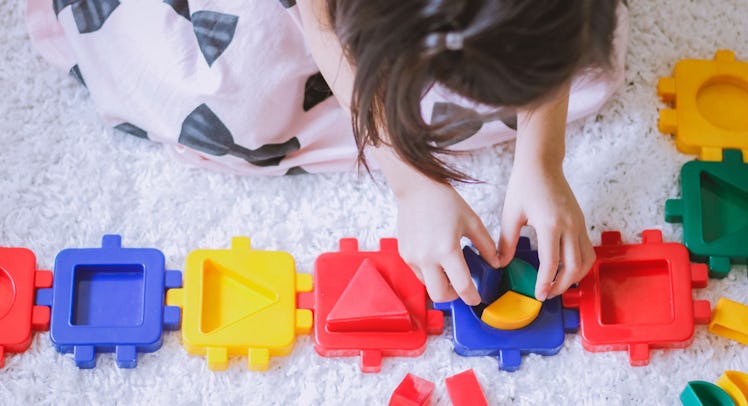Most Coding Toys For Babies Are Bullshit, But That’s Totally Fine
Kids don’t really benefit from coding toys until preschool, but that doesn’t mean parents shouldn’t buy them.

Parents determined to raise the most successful offspring often seek a practical edge in toys meant to give their kids a head start on the future. With the future looking ever more digital, many modern parents look to STEM toys specifically designed to teach children how to code. These various toys supposedly set children up to understand the basics of programming, orienting them to future high-tech employment. Unfortunately, the big claims often rest on ineffective, flashy gimmicks unfounded by research. But that doesn’t mean parents shouldn’t bother buying toys meant to teach coding.
“The very first thing that parents should know is that toys, in general, are beneficial,” explains Dr. Celeste Kidd of the Rochester University Kid Lab. “Even if it does not teach a specific skill, we have a lot of evidence that play is a mechanism by which kids build knowledge and social skills.”
Kidd notes that just because a toy does not bear the designation of “educational” doesn’t mean that it isn’t educating a kid. In fact, the term seems to be most useful as a marketing tool, rather than a way for parents to navigate the best choice of toys for their kids. Arguably, according to Kidd, any toy a child plays with is an “educational” toy.
Fair enough. But not every toy teaches an activity as complex as coding, right? Well, it depends on how a person chooses to look at it. When coding is broken down into its constituent skills, essentially what children need to learn is the ability to learn the language, as well as gain some understanding of input versus output. Reading to a kid as often as possible will take care of the first part. And there are any number of games that can teach input and output or cause and effect.
“There are games that have properties that are shared with programming. ‘Simon Says’ comes to mind,” says Kidd. “That’s a whole lot like an ‘if/else’ command in programming. People would laugh at you if you said that ‘Simon Says’ teaches programming skills specifically. But it teaches them in much the same way some of the toys out there do.”
However, the most spurious claims come from coding toys for babies. Kidd notes that these toys prey on the parental pressure to introduce certain learning concepts to babies as early as possible. But there is no proof the early learning intervention actually works. “We do not have evidence that ultimately to become an amazing programmer you need early exposure to programming concepts,” Kidd says.
Besides, babies don’t have the best working memories. Any toy that requires them to take steps will ultimately be futile because they won’t be able to remember where in the process they are. Also, children are notoriously bad at following instructions. They prefer to explore and play.
“For kids to gain something that would transfer to actual programming down the road requires playing with a toy in a specific way that might not be interesting,” says Kidd. “It’s probably impossible to design a system that kids would be interested in that teaches all of the skills you would need for programming.”
Does that mean that these toys should be avoided? Not necessarily. If a toy has lights and sounds that interest a child and makes them want to play, that’s a good thing. Because any type of play is ultimately beneficial. So a fun toy is a good toy. Full stop. It doesn’t necessarily matter what it’s trying to teach. There’s something even more important, says Kidd: instilling curiosity. “Instead of teaching them programming, teach them how to love exploring and figuring stuff out.”